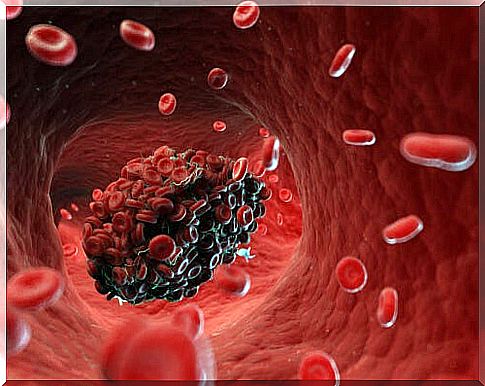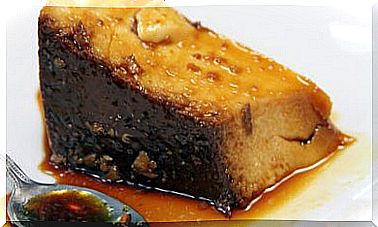Cerebral Embolism: Symptoms, Types And Causes
The terms stroke, cerebral embolism or stroke are often confusing and difficult to distinguish. A cerebral embolism is a type of heart attack, that is, a situation in which the blood flow in a part of the brain is interrupted.
When blood cannot get to a tissue properly, it can be damaged by a lack of oxygen. The brain is an organ especially sensitive to this. In addition, depending on which area is infarcted, some functions or others will be affected.
Unfortunately, in developed countries, cerebrovascular diseases are the third leading cause of death. In fact, they are the leading cause of disability and dementia among adults. Therefore, in this article we explain everything you need to know about stroke.
What is a cerebral embolism?
During a stroke, an area of the brain is left without blood supply. This refers, specifically, to when a blood vessel has been obstructed by an embolus.
An embolus is a mass that is transported with the blood to another place in the body than where it originated. It can be solid, gaseous or liquid. However, most often it is a blood clot.
That is, a cerebral embolism, in general, consists of a blood clot originating in another part of the body traveling with the blood until it reaches the vessels of the brain. There, it clogs the vessel and causes blood flow to stop.
It is important to distinguish thrombi from emboli. When we speak of thrombi or thrombosis, we refer to a clot that is in the same vessel that has been created, without moving. The plungers, on the other hand, do not have a fixed position.

Types of embolism
Cerebral embolism, as we have already mentioned, can be of different types. First, cardiac emboli stand out. They are blood clots that occur due to an alteration in the heart rhythm. The best example is atrial fibrillation.
It can also be an air piston; it is an air bubble that prevents blood from circulating through the vessel. Fatty emboli are accumulations of fat that are shed from its original place and is typical of atherosclerosis.
Finally, we must highlight that cerebral embolism can also be caused by a tumor process. In this case, part of the tumor or a group of cancer cells are those that obstruct the vessel.
What are the symptoms of a stroke?
Symptoms of a stroke can be very varied. They depend on the area of the brain that is affected. However, there are a number of signs that are often expressed:
- Paralysis or numbness of any part of the body: in an arm and a leg, or in the middle of the face.
- Headache abrupt.
- Loss of vision
- Confusion and disorientation.
- Sudden tired feeling
The problem is that if circulation is not restored as soon as possible, there can be serious complications. It is very common that, after a cerebral embolism, there are sequelae. For example, that the language or mobility of a member is affected.
Some people suffer from memory problems and difficulty coordinating movements. Therefore, it is a medical emergency. Initiating treatment as soon as possible reduces the appearance of complications.

Which is the treatment?
Treatment of stroke depends on the type of stroke and the area that is affected. The goal is to restore blood flow. If it is a clot, drugs can be given to destroy it.
On many occasions it is necessary to perform surgery. A less invasive vascular treatment can also be done, thanks to a catheter. The catheter is inserted through another part of the body and travels until it reaches the vessel where the plunger is located.
This is a medical emergency. Therefore, before any symptoms it is essential to see a doctor quickly. The treatment will be chosen taking into account the characteristics of each patient.









